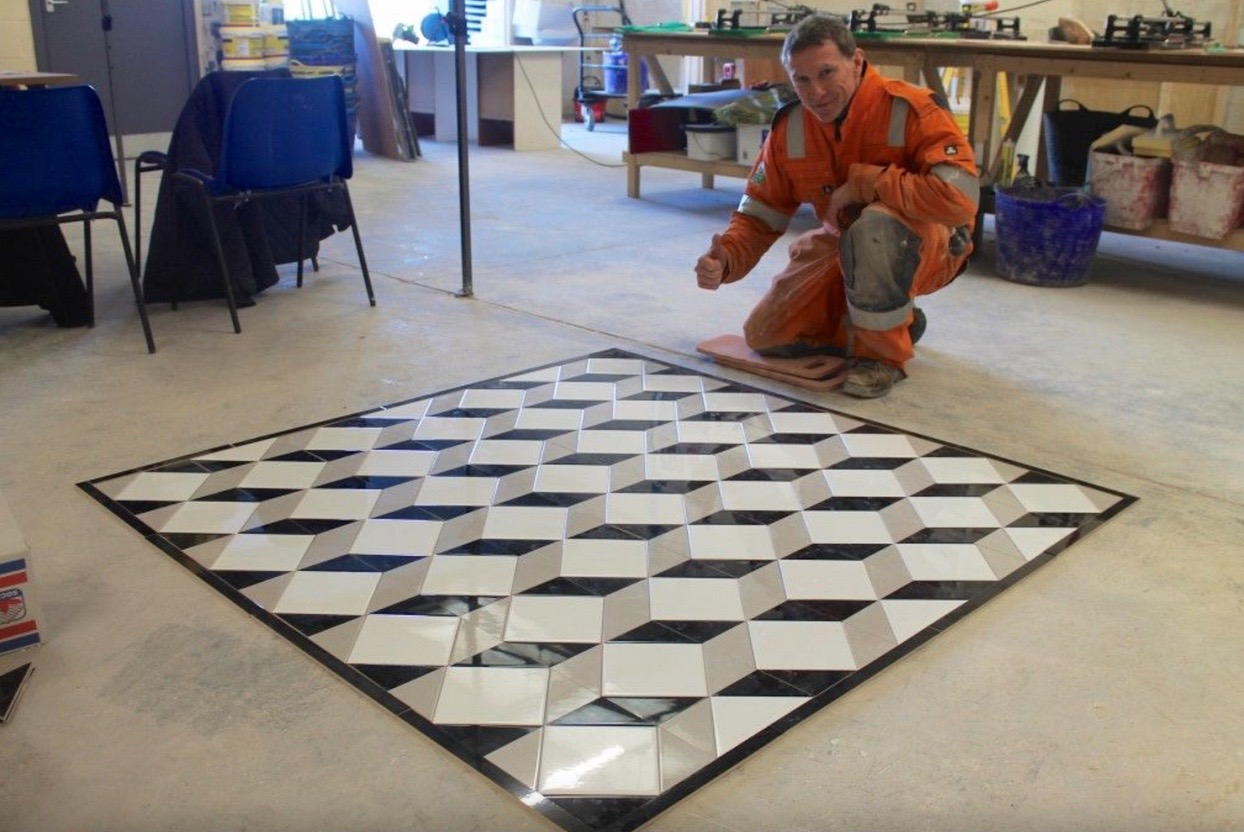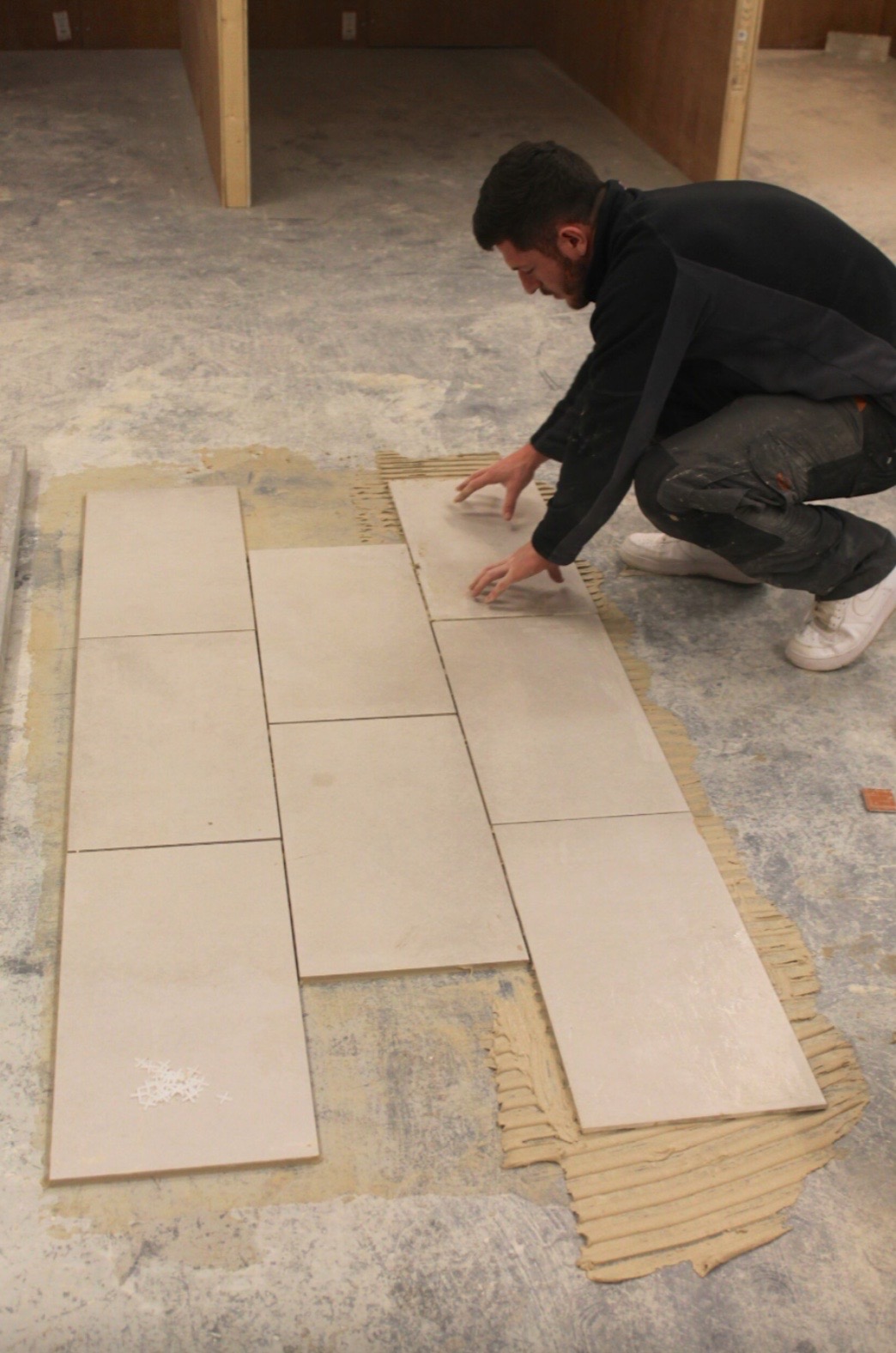Tile Design Considerations for Commercial Spaces

In commercial interior design, every element plays a crucial role in shaping the ambience and functionality of the space. Among these elements, the choice of tiles stands out as a fundamental decision that can significantly influence the aesthetics, durability, and overall feel of the environment. Whether it’s an office space or a retail setting, selecting the right tiles involves careful consideration of various factors to ensure both practicality and visual appeal. Let’s delve into some key considerations when it comes to tile design for commercial spaces.
Durability and Maintenance
Commercial spaces experience high foot traffic and constant activity, making durability a paramount consideration. Opting for tiles engineered to withstand heavy use is essential to ensure longevity and minimise maintenance costs. Porcelain tiles, for instance, are renowned for their durability and resistance to scratches, stains, and moisture, making them an ideal choice for busy commercial environments. Additionally, selecting tiles with low porosity makes cleaning and maintenance more manageable, contributing to the longevity of the flooring.
Aesthetic Appeal
While functionality is crucial, aesthetics should not be overlooked. The tile design sets the tone for the entire space, influencing perceptions and enhancing the brand image. When designing for offices, consider tiles that promote a professional atmosphere while reflecting the company’s culture and values. Neutral tones and sleek finishes can create a contemporary look, fostering a productive work environment. In contrast, retail spaces often benefit from bold patterns, vibrant colours, and textured tiles that capture attention and stimulate customer interest.
Brand Identity and Cohesion
Tiles can be used strategically to reinforce brand identity and create a cohesive visual language throughout the commercial space. Incorporating company colours or logos into the tile design can subtly reinforce brand recognition and strengthen brand association among employees or customers. Consistency in tile selection across different areas of the space helps create a unified and harmonious environment, enhancing the overall brand experience.
Functionality and Safety
Beyond aesthetics, tiles should also prioritise functionality and safety. In commercial settings, where safety regulations are paramount, selecting slip-resistant tiles for areas prone to moisture or spills is crucial to prevent accidents and ensure compliance. Moreover, tiles with acoustic properties can help mitigate noise levels in open office layouts, enhancing comfort and productivity for occupants.
Flexibility and Adaptability
Commercial spaces often undergo transformations to accommodate evolving needs and trends. Therefore, choosing versatile tile designs that can adapt to changing requirements is advantageous. Modular tiles or customisable patterns allow for easy replacement or reconfiguration, enabling seamless updates to reflect shifting design preferences or functional adjustments within the space.
Environmental Considerations
In an era of increasing environmental consciousness, sustainable design practices are gaining prominence in commercial interiors. Opting for eco-friendly tiles made from recycled materials or produced using energy-efficient manufacturing processes can align with sustainability goals and contribute to certification efforts. Additionally, selecting locally sourced tiles reduces carbon emissions associated with transportation while supporting the local economy.
Budget and Cost Efficiency
While quality should never be compromised, adhering to budget constraints is essential when selecting tiles for commercial projects. Conducting a thorough cost-benefit analysis that considers long-term maintenance expenses, durability, and lifecycle costs can help optimise budget allocation without sacrificing quality or design integrity. Furthermore, working closely with suppliers and leveraging bulk purchasing opportunities can yield cost savings without compromising on quality.
Tiling Training and Skills Development
Incorporating tiling training and skills development programs for staff members involved in maintenance and renovation projects can enhance the overall effectiveness of tile selection and installation processes. By investing in continuous training and skill-building initiatives, businesses can ensure that their personnel are equipped with the knowledge and expertise needed to handle tiling tasks efficiently and to a high standard. This not only improves the quality of workmanship but also minimises the risk of errors or complications during tile installations, ultimately contributing to the long-term durability and aesthetic appeal of the commercial space.
As commercial spaces evolve to meet the changing demands of the modern world, tile design continues to play a crucial role in shaping these environments. Let’s explore some additional considerations to further enhance the effectiveness and appeal of tile selections in commercial settings.
Traffic Patterns and Zoning
Understanding the flow of traffic within the commercial space is essential for making informed tile design decisions. Areas with heavy foot traffic, such as entrances, corridors, and common areas, require durable tiles that can withstand constant use without showing signs of wear and tear. By zoning different areas based on their usage and traffic patterns, designers can select appropriate tile materials and finishes to ensure optimal performance and longevity.
Spatial Perception and Illusion
Tiles can be used creatively to manipulate spatial perception and create visual illusions that enhance the overall perception of space. In smaller commercial settings, such as boutique retail stores or compact office suites, opting for large-format tiles with minimal grout lines can create a sense of continuity and openness. Conversely, using contrasting tile patterns or colours to delineate different zones within a larger space can add visual interest and depth, facilitating wayfinding and enhancing user experience.
Lighting Integration
Lighting plays a crucial role in accentuating tile features and enhancing the overall ambience of commercial spaces. By integrating lighting elements into the tile design, designers who also have basic tiling skills can create dynamic visual effects that highlight texture, colour, and pattern variations. For example, backlit translucent tiles can create a captivating focal point in reception areas or feature walls, adding a touch of drama and sophistication to the space. Additionally, strategically placed accent lighting can enhance the visibility of tile textures and finishes, creating a warm and inviting atmosphere for occupants and visitors alike.
Accessibility and Inclusivity
Designing commercial spaces with accessibility in mind is not only a legal requirement but also a moral imperative. Ensuring that tiles meet accessibility standards, such as providing slip-resistant surfaces and minimizing tripping hazards, is essential for creating inclusive environments that cater to individuals of all abilities. Incorporating tactile warning indicators into the tile design for visually impaired users and ensuring smooth transitions between different flooring materials contribute to a safer and more accessible built environment.
Local Cultural Influences
In multicultural urban environments, commercial spaces often serve diverse communities with distinct cultural backgrounds and preferences. Incorporating elements of local culture and heritage into the tile design can resonate with the target audience and foster a sense of belonging and identity. Whether it’s integrating traditional motifs and patterns or using locally sourced materials and craftsmanship, embracing cultural influences adds depth and authenticity to the commercial space, enriching the overall user experience and strengthening community connections.
By considering these additional factors in tile design for commercial spaces, designers can create environments that not only meet functional requirements but also resonate with occupants on a deeper emotional level, fostering a sense of connection, belonging, and well-being. With thoughtful planning and creative execution, tiles can elevate the aesthetic appeal, functionality, and inclusivity of commercial interiors, leaving a lasting impression on users and contributing to the success of the business.



